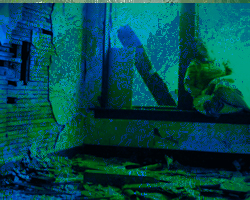
The Basic Dilemma of the Artist
(continued)
Every artist has a reference group, his audience. They could be alive
or dead (for instance, he could measure himself against past artists).
They could be few or many, but they must exist for art, in its fullest
sense, to exist. Modern theories of art speak about the audience as
an integral and defining part of the artistic creation and even of
the artefact itself.
But this, precisely, is the source of the dilemma of the artist:
Who is to determine who is a good, qualitative artist and who is not?
Put differently, who is to measure the distance between the original experience and its representation?
After all, if the original experience is an element of an idiosyncratic, non-communicable, language — we have no access to any information regarding it and, therefore, we are in no position to judge it. Only the artist has access to it and only he can decide how far is his representation from his original experience. Art criticism is impossible.
Granted, his reference group (his audience, however limited, whether among the living, or among the dead) has access to that meta language, that universal dictionary available to all humans. But this is already a long way towards the representation (the work of art). No one in the audience has access to the original experience and their capacity to pass judgement is, therefore, in great doubt.
On the other hand, only the reference group, only the audience can aptly judge the representation for what it is. The artist is too emotionally involved. True, the cold, objective facts concerning the work of art are available to both artist and reference group — but the audience is in a privileged status, its bias is less pronounced.
Normally, the reference group will use the meta language embedded in us as humans, some empathy, some vague comparisons of emotions to try and grasp the emotional foundation laid by the artist. But this is very much like substituting verbal intercourse for the real thing. Talking about emotions — let alone making assumptions about what the artist may have felt that we also, maybe, share — is a far cry from what really transpired in the artist's mind.
We are faced with a dichotomy:
The epistemological elements in the artistic process belong exclusively and incommunicably to the artist
The ontological aspects of the artistic process belong largely to the group of reference but they have no access to the epistemological domain
And the work of art can be judged only by comparing the epistemological to the ontological.
Nor the artist, neither his group of reference can do it. This mission is nigh impossible.
Thus, an artist must make a decision early on in his career:
Should he remain loyal and close to his emotional experiences and studies and forgo the warmth and comfort of being reassured and directed from the outside, through the reactions of the reference group, or should he consider the views, criticism and advice of the reference group in his artistic creation — and, most probably, have to compromise the quality and the intensity of his original emotion in order to be more communicative.
I wish to thank my brother, Sharon Vaknin, a gifted painter and illustrator, for raising these issues.